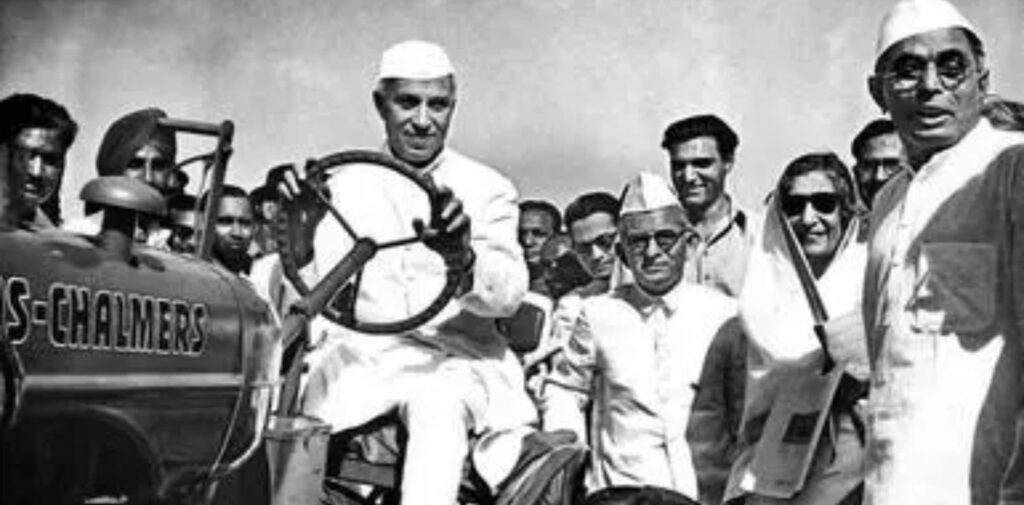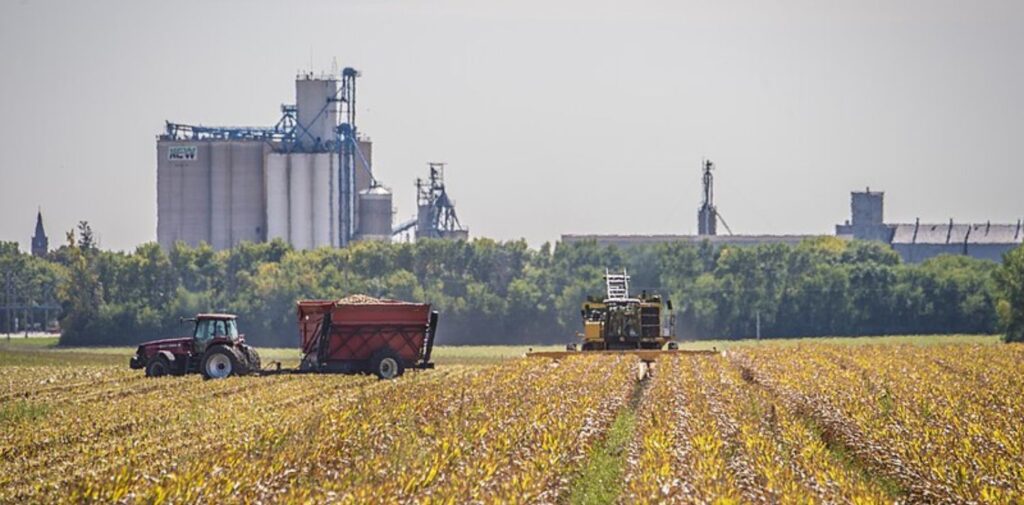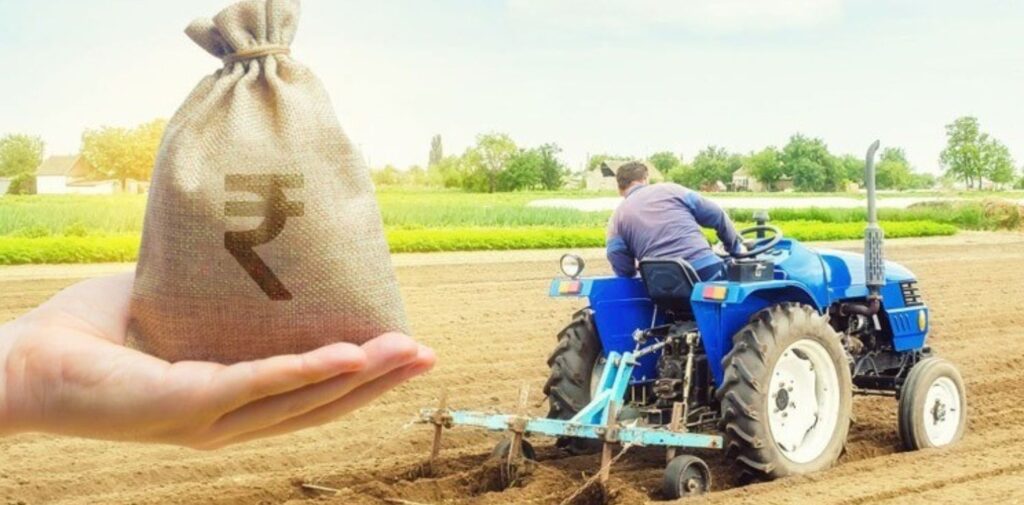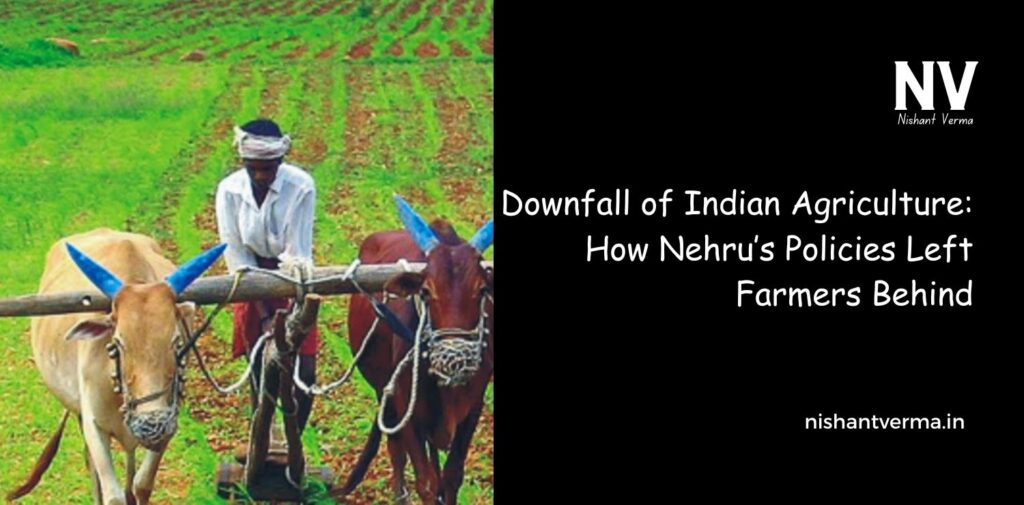When India gained independence in 1947, one of the biggest challenges the country faced was the condition of its agriculture. Nearly 70% of India’s population depended on farming for their livelihood, and the agricultural sector was struggling with outdated practices, lack of resources, and widespread poverty. Jawaharlal Nehru, India’s first Prime Minister, was deeply committed to the country’s development and wanted to modernize agriculture. However, despite his good intentions, his policies ended up failing to improve the lives of farmers in the long run. Instead of transforming Indian agriculture, Nehru’s policies inadvertently left farmers behind.
Nehru’s Vision for India’s Agriculture
Nehru believed that India’s future lay in industrialization and modernization. As a result, much of his attention was focused on building industries, infrastructure, and a strong central government. While Nehru did recognize the importance of agriculture for India’s economy, his vision for it was often overshadowed by his focus on modern sectors like industry and technology. His approach to agriculture was based on the idea that industrial growth would eventually trickle down to rural areas, benefiting farmers and improving their livelihoods.
Nehru’s government aimed to create a modern, self-sufficient economy, and he thought that industrialization would provide the resources needed to improve agriculture. He envisioned a state-led approach to development, where the government would play a central role in shaping the agricultural policies. However, the focus on industry, combined with a series of policies that were either poorly planned or mismanaged, had a lasting negative impact on Indian agriculture and the lives of farmers.

Land Reforms: Unfinished and Incomplete
One of Nehru’s early goals was to implement land reforms to address the deep inequalities in land ownership. In a country where a few landlords controlled most of the land while millions of farmers worked on it as tenants, land redistribution seemed like an obvious solution to improve the lives of farmers. Nehru’s government passed laws to abolish the zamindari system (a system where landlords held control over agricultural land) and attempted to redistribute land to the landless and land-poor farmers.
However, these land reforms were poorly implemented and incomplete. Though some states, like West Bengal and Kerala, made significant progress in land redistribution, the process was slow and uneven across the country. Powerful landlords, who had influence over local politics, often found ways to circumvent these laws. In many regions, landlords continued to hold on to vast tracts of land, while the landless farmers remained without access to productive land. Without the proper administrative structure or political will, the promises of land reforms were never fully realized. As a result, many farmers were still trapped in poverty, working on land they didn’t own and under exploitative conditions.
The Failure of the Green Revolution to Help All Farmers
In the 1960s, Nehru’s government embraced the Green Revolution, a set of agricultural reforms aimed at increasing crop production through the use of high-yielding variety (HYV) seeds, chemical fertilizers, and irrigation techniques. The Green Revolution was successful in increasing food production in certain areas, particularly in states like Punjab, Haryana, and Uttar Pradesh. It helped India achieve self-sufficiency in food grains, particularly wheat and rice.
However, the benefits of the Green Revolution were not felt by all farmers. The new agricultural techniques required significant investment in terms of chemicals, irrigation systems, and machinery. These were often beyond the reach of small farmers who lacked the financial resources to adopt them. As a result, large landowners and wealthier farmers, who could afford the high costs, benefited the most from the Green Revolution, while small and poor farmers were left behind.
Moreover, the Green Revolution focused on staple crops like wheat and rice, which did not address the needs of all farmers. Many regions in India grew other crops like millet, pulses, and oilseeds, but these were neglected in the Green Revolution. As a result, the agricultural growth achieved by the Green Revolution was uneven, and many farmers continued to struggle.

Overemphasis on Industrialization at the Cost of Agriculture
Nehru’s vision for India was that the country should industrialize rapidly, with a strong focus on building heavy industries like steel, machinery, and infrastructure. To achieve this, he invested heavily in building industrial complexes and public sector enterprises. However, this focus on industrialization often came at the expense of agriculture.
The government’s policies heavily favored urban development and the needs of industrial growth. Rural areas, where agriculture was the backbone of the economy, did not receive the same level of attention or investment. The poor infrastructure in rural areas, such as inadequate roads, storage facilities, and market access, continued to hinder farmers’ ability to improve their productivity and earn a decent income.
At the same time, the price policies set by the government did not always benefit farmers. The government controlled the prices of many essential goods, including food grains, to keep them affordable for urban consumers. However, this often meant that farmers were not paid enough for their produce, which discouraged them from investing in better farming practices or modern equipment.
The Bureaucratic Approach to Agriculture
Nehru’s government was highly centralized, and many decisions related to agriculture were made by bureaucrats in Delhi rather than local authorities who understood the conditions on the ground. This bureaucratic approach often led to policies that were disconnected from the realities of rural life. The top-down nature of these policies meant that the needs of farmers, especially those in remote and underdeveloped areas, were often ignored.
Moreover, the agricultural policies designed in Delhi were not always suited to the diverse climates, soils, and farming practices found across the country. India has a wide range of agricultural regions, from the fertile plains of the Ganges to the dry and arid regions of Rajasthan. A one-size-fits-all approach to agricultural policy could not address the unique needs of each region, and as a result, the policies were ineffective in many areas.

Lack of Focus on Small Farmers and Agriculture as a Business
Nehru’s policies often treated agriculture as a sector in need of state support, but there was little emphasis on viewing farming as a business that could generate profit for farmers. The failure to recognize the importance of small farmers and the lack of focus on making agriculture more market-oriented meant that farmers were often dependent on government subsidies and loans, rather than becoming self-sufficient and prosperous.
As India moved into the 1960s and 1970s, the focus on large-scale farming and industrialization meant that small farmers did not receive the attention they needed. Small-scale farmers often struggled to compete with the larger, wealthier landowners who could afford modern techniques and inputs. As a result, the gap between the rich and poor farmers grew wider, and many small farmers fell deeper into poverty.
Conclusion: The Long-Term Impact on Indian Agriculture
The consequences of Nehru’s policies for Indian agriculture were mixed. While Nehru succeeded in increasing food production and achieving self-sufficiency, his focus on industrialization and bureaucratic control left farmers behind. The slow implementation of land reforms, the failure of the Green Revolution to benefit all farmers, and the lack of investment in rural areas all contributed to the downfall of Indian agriculture.
Nehru’s vision of a modern and industrialized India was important, but it failed to prioritize the rural areas where most of the population lived. As a result, the farmers who were the backbone of the country’s economy were often neglected. Even decades after Nehru’s time, India continues to face challenges in improving the lives of its farmers and developing a more sustainable and equitable agricultural system.
In retrospect, the failure to address the real needs of farmers and the uneven distribution of the benefits of agricultural growth have left a lasting impact on India’s rural economy. Today, agricultural reforms continue to be a key issue in India, as policymakers work to improve the lives of farmers and ensure that agriculture remains a viable and prosperous sector. Nehru’s policies, though well-intentioned, remind us of the need for policies that not only promote industrial growth but also uplift the rural poor, who form the heart of India’s agricultural landscape.




